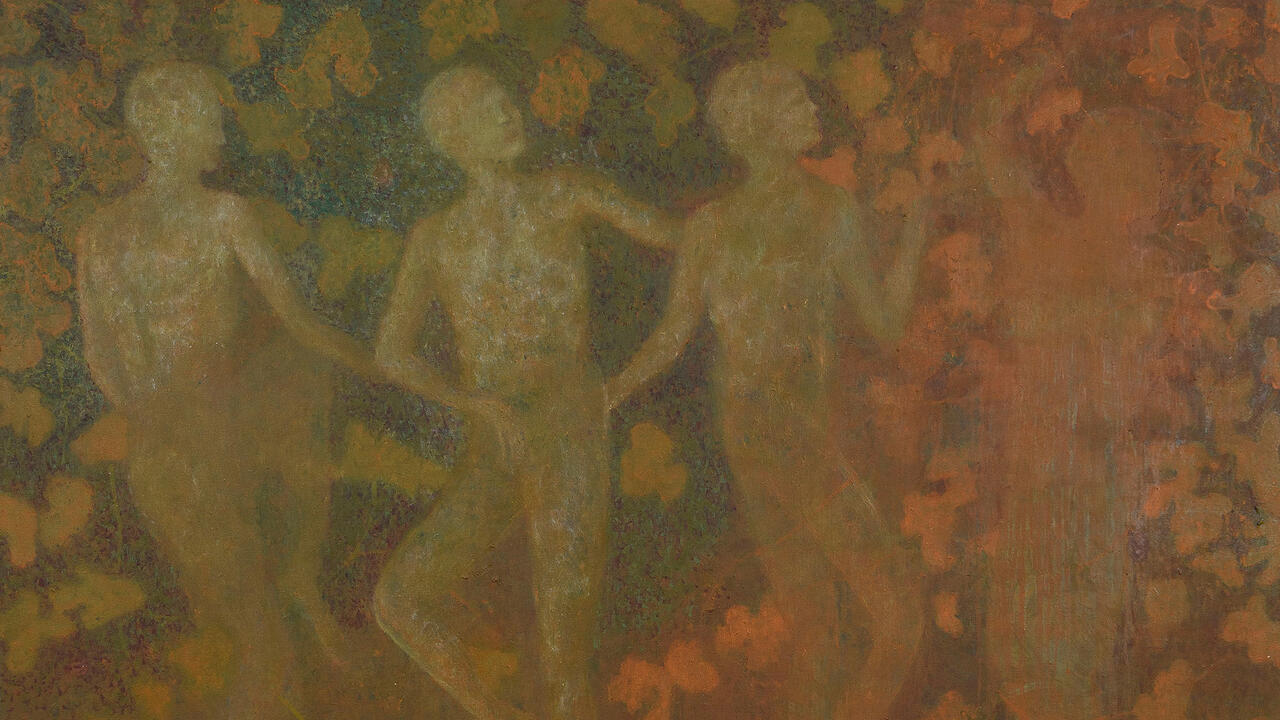Who’s Afraid of the Baroque?
At Museo di Roma, an exhibition of sculptures by Antonio Canova celebrates the sumptuous style as one of the ‘birth-pangs of modernity’
At Museo di Roma, an exhibition of sculptures by Antonio Canova celebrates the sumptuous style as one of the ‘birth-pangs of modernity’

The term ‘baroque’ is a slippery one. When it first emerged in the 18th century, it was a euphemism for superficial, kitsch artworks, undeserving of critical attention. Since then, its meaning has shifted to encompass a vague historical period as well as the greed and decadence of a whole roster of corrupt patrons. Today, journalists around the world casually liken images of US President Donald Trump – posing in front of golden penthouse doors or arguing with international leaders – to ‘baroque paintings’. Writers critical of the so-called one percent, such as Italian theorist Franco ‘Bifo’ Berardi, talk of an era of ‘baroque capitalism’ to describe the dubious aesthetic and moral standards of the banking and real-estate moguls that have profited from decades of globalization. In cinema, directors from Lauren Greenfield to Yorgos Lanthimos have weaponized the baroque as part of a general assault on gauche and rapacious rulers of all kinds.

Yet, disregarding baroque art as wallpaper for the super-rich isn’t just anachronistic, it’s a gross oversimplification. For starters, baroque artists, like their renaissance forebears, often inscribed coded messages into their works to comment on the hypocrisies of their bosses. Pietro Bracci’s Neptune, at the centre of Rome’s Trevi Fountain (1762), is a symbol of rationality’s triumph over religious superstition. Gian Lorenzo Bernini’s Ecstasy of Saint Teresa (1647–52) shows the eponymous saint in the midst of what appears less like divine revelation than a full-fledged orgasm. Giacomo Serpotta’s anarchic 18th-century stucco cupids, meanwhile, are a thinly veiled celebration of the virtues of the Sicilian working class. However pompous it may seem, baroque art has always had a radical side, calling into question the power it was required to represent.
On 9 October, a new exhibition dedicated to the life and work of the sculptor Antonio Canova, ‘Eterna Bellezza’ (Eternal Beauty), opens at the Museo di Roma. While his reputation has faded in recent years, Canova was once considered among Italy’s finest artists, a master of neo-classicism – the late baroque movement that sought to reign in the worst excesses of rococo. The real importance of Canova’s work today, though, resides in the unique manner by which it bridges the supposedly closed-off sphere of 18th-century art and that of a relatively open, secular world. Few Italian sculptors of that generation demonstrated such sensitivity to Enlightenment ideas about the mind and spirit, and their democratic implications, as Canova. His work is probing and self-reflexive – a powerful retort to the idea that the baroque is all style over substance.

The first thing that strikes viewers unfamiliar with Canova’s work is the sobriety with which the artist treats mythological themes. His hyper-realistic Orpheus (1776) is depicted lost in the underworld, distraught and painfully alone. His Theseus and the Minotaur (1781–83) rests on the body of the defeated Minotaur, brooding and exhausted. There is a curious mix of archetype and individualism in such pieces that rarely collapses into melodrama. Canova’s subjects may recall those of the high renaissance, but his craftsmanship is quite different to that of his spiritual mentors. Michelangelo’s statues are rugged and malleable, drenched in symbolism. Canova’s figures, by contrast, are dry, airy and delicate. The impression is less of humanity revealed out of rock with hammer and chisel than of spirits conjured by the wind.
Canova’s work is anything but ornamental: it marks a singular attempt to communicate recognizably modern desires and fears. The Three Graces (1815–17), for instance, shows Zeus’s daughters – Euphrosyne, Aglaea and Thalia – huddled together in a pose reminiscent of Sandro Botticelli’s depiction of the same figures in Primavera (c.1470–80). At first, these appear to be standard Hellenistic models. Yet, the composition, in which the women lean their heads together, is unusual. What exactly are these figures discussing? Are they confiding in one another? Gossiping? Plotting something? The more we look, the more mysterious the work becomes. The same uncertainty permeates the artist’s most famous sculpture, which depicts Cupid embracing the prostrate figure of Psyche (Psyche Revived by Cupid’s Kiss, 1787–93). There is no ‘comfortable’ angle from which we can observe both figures’ faces here. Instead, the viewer is forced to orbit the marble block, flitting between the two protagonists’ perspectives. What seems like an allegorical work is, we gradually realize, an early visual example of the intersubjectivity that would fuel decades of rich experimentation on the part of the romantics and, ultimately, the modernists.

The curator, Giuseppe Pavanello, has gone to considerable lengths to position Canova within the larger revolutionary energies of the era in which he lived. We learn about the artist’s 1820 portrait of US president George Washington – destroyed, sadly, in a fire – as well as his admiration for Napoleon Bonaparte. There is little need, though, to ‘redeem’ Canova through his biography. Even at its most straightforward, the artist’s work betrays a scientific literacy that owes as much to the 18th-century philosophers Immanuel Kant and Friedrich Schiller as to classical artistic templates. This is not an exhibition about fairies, nymphs and gods. It is a journey through the birth-pangs of modernity which, if nothing else, should serve to temper some of the more overzealous generalizations about the baroque as a whole.
Main image: Antonio Canova, The Three Graces (detail), 1815–17, marble, 173 × 97 × 57 cm. Courtesy: Wikimedia Commons




















